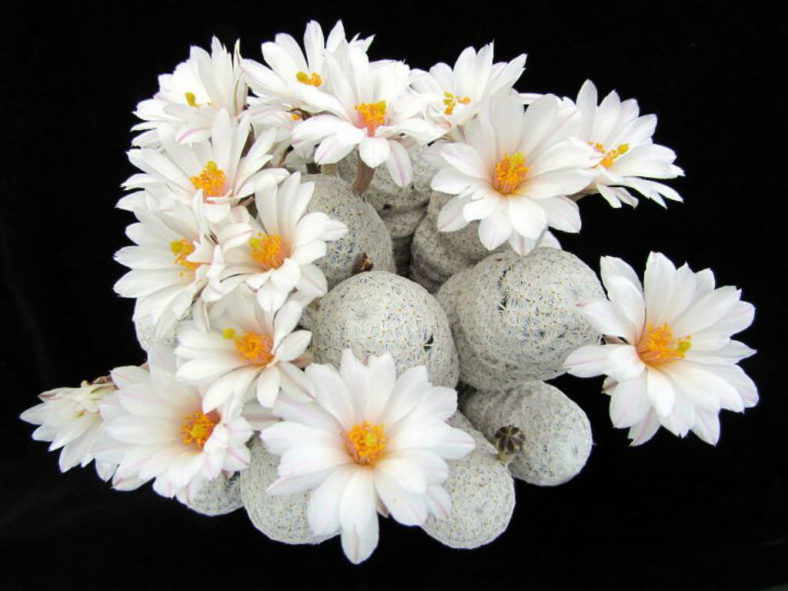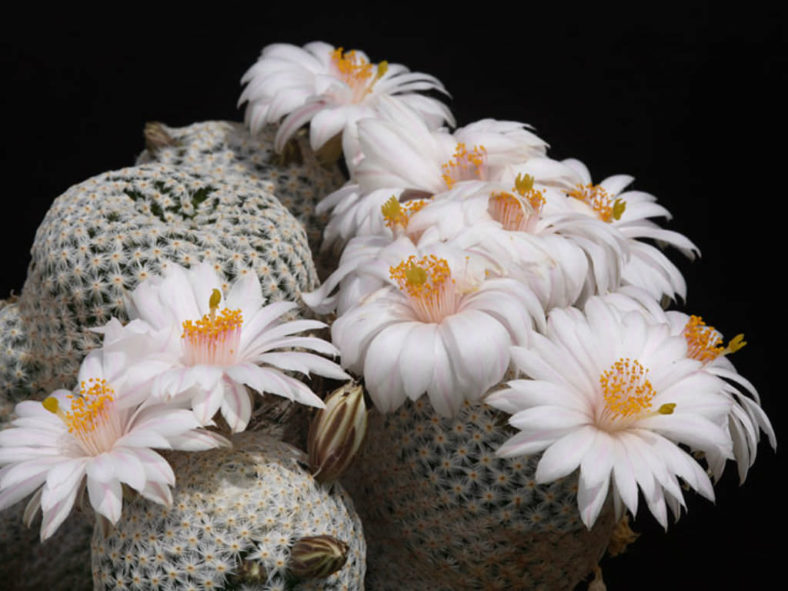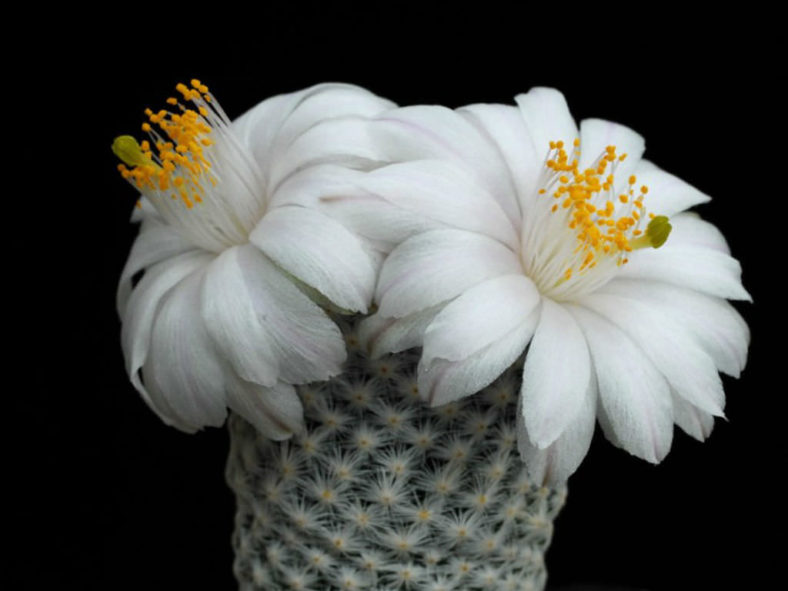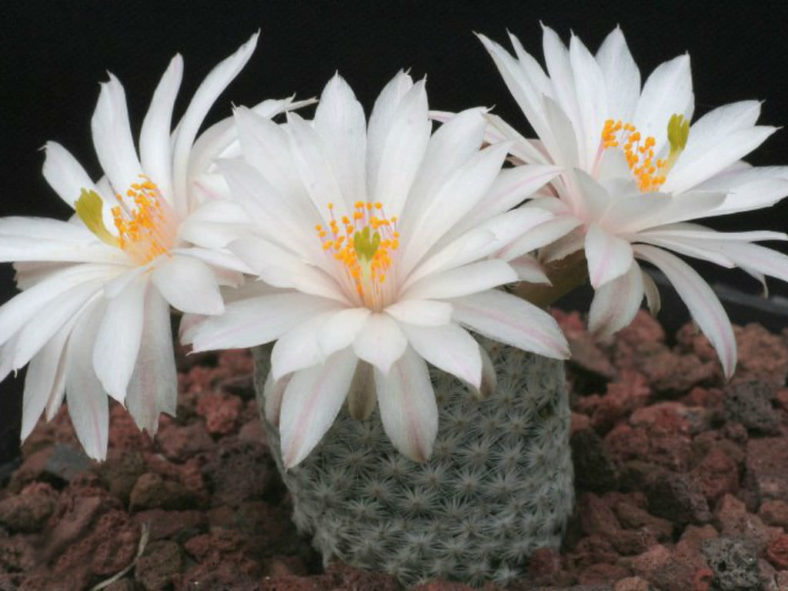Scientific Name
Mammillaria albiflora (Werderm.) Backeb.
Synonym(s)
Escobariopsis albiflora, Mammillaria herrerae var. albiflora, Neomammillaria herrerae var. albiflora
Scientific Classification
Family: Cactaceae
Subfamily: Cactoideae
Tribe: Cacteae
Subtribe: Cactinae
Genus: Mammillaria
Etymology
The specific epithet "albiflora" (pronounced "al-BIH-flor-uh") means "white-flowered" and refers to the color of the flowers of this species.
Origin
Mammillaria albiflora is native to Mexico. It occurs near Pozos de Mineral, Guanajuato, at elevations between 7,090 and 7,220 feet (2,160 and 2,200 m).
Description
Mammillaria albiflora is a small cactus with spherical to cylindrical stems covered with clusters of soft, white spines. The stems can grow solitary or in clumps, reaching 2 inches (5 cm) in height and 1 inch (2.5 cm) in diameter. The tubercles are small and without latex. Each areole bears 60 to 80 radial spines. The central spines are absent.
The flowers are white with a pinkish midline, funnel-shaped, and appear in spring, measuring up to 1.4 inches (3.5 cm) long and 1 inch (2.5 cm) in diameter. The fruits are whitish with black seeds and are hidden by spine clusters.

How to Grow and Care for Mammillaria albiflora
Hardiness: USDA hardiness zones 9b to 11b: from 25°F (-3.9°C) to 50°F (10°C).
To encourage better flowering, allow the plants to enjoy a cooling period in the winter and suspend watering. Unlike many other cacti, which use their ribs as storage devices, Mammillaria feature raised tubercles from which spines emerge. When you water, the tubercles expand, increasing water storage. The flowers emerge from the axils of these tubercles on the previous year's growth, which accounts for their interesting halo effect. The cactus mustn't be exposed to prolonged damp or standing water. Never let your cactus sit in a dish of water. Lastly, fertilize during the growing season for the best results.
Repot as needed, preferably during the warm season. To repot Mammillaria, ensure the soil is dry before repotting, then gently remove the pot. Knock away the old soil from the roots, removing any rotted or dead roots. Treat any cuts with a fungicide. Place the plant in its new pot and backfill it with potting soil, spreading the roots as you repot. Leave the plant dry for a week or so, then begin to water lightly to reduce the risk of root rot.
Learn more at How to Grow and Care for Mammillaria.
Links
- Back to genus Mammillaria
- Succupedia: Browse succulents by Scientific Name, Common Name, Genus, Family, USDA Hardiness Zone, Origin, or cacti by Genus
Photo Gallery
Click on a photo to see a larger version.


